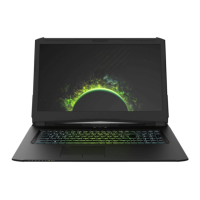How to improve slow gaming performance on PowerSpec 1710 Laptop?
- Jjason67Aug 4, 2025
To improve gaming performance on your PowerSpec Laptop, it's recommended that you set the fan speed to maximum. You can adjust the fan speed by using the Fn + 1 key combination.

